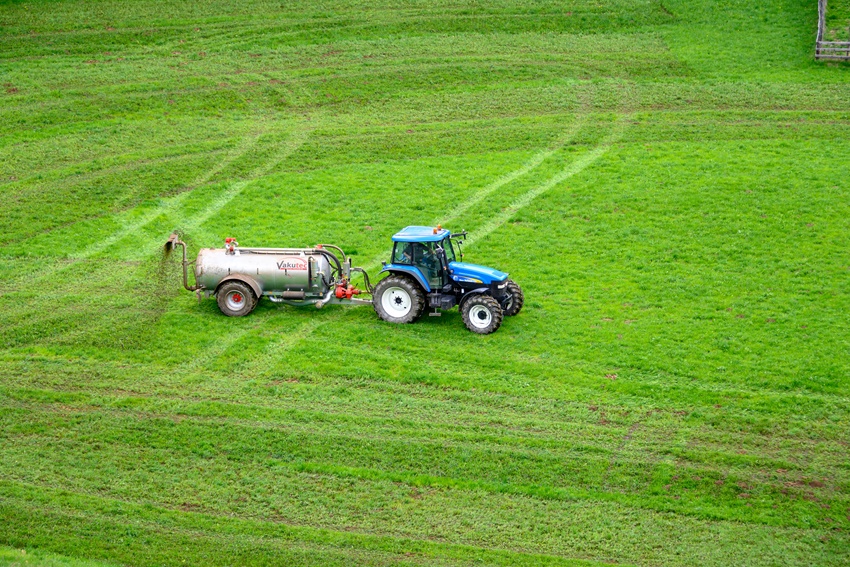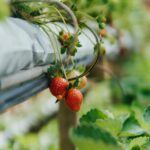The recent global supply chain issues include a bigger concern for the food industry, there is a shortage in the supply of chemical fertilizer. The fertilizer shortage is unfortunately creating a major production challenge to farmers, and interestingly, a bullish business opportunity to potential investors. This is mainly because fertilizer plays an important role in agricultural production globally. Read more to learn about how fertilizer is a good investment.
Overview of the Chemical Fertilizer Industry
Fertilizer is an integral component of the global food system, and a player in economic development. This is considering that agriculture not only feeds the food industry but also supplies raw materials to other sectors of the economy as well. Both organic and chemical fertilizers have been proven to increase crop yields significantly, contributing to the achievement of food and global nutrition security. Furthermore, amidst depleting easily produced mineral resources, fertilizers enable increased production within a given land area. A shortage of fertilizers will create a challenge for obtaining specific nutrients needed by the soil and crops to produce quality food required by the human body.
However, despite the importance of the fertilizer industry, it has over the years been hit by a number of setbacks. For instance, in 2020 the COVID-19 pandemic disrupted logistics and supply chains globally which led to a hike in the price of fertilizer products [1]. In 2021, chemical fertilizer in the North-American market reached a record all-time high of nearly $1,000 per ton, a 7.9% increase over the previous year. Also, the price of Diammonium Phosphate (DAP) – one of the most required fertilizer in cereal farming increased by nearly 80% between 2020 and 2021 in the US [2]. This is significant considering that North America (United States of America and Canada) makes up the largest producers, exporters and consumers of fertilizer products globally. Thus, a hit on the North American market implies a hit on the global fertilizer market. Regrettably, since 2021 fertilizer price index has remained high. This is reportedly caused by a number of factors, some of which include;
- Increase in the price of natural gas which is a major raw material in fertilizer production;
- Environmental and weather challenges such as Hurricane Ida and cold weather which forced the shutdown of some major factories in the US;
- Disruption in power supply in parts of Asia;
- Disruption in global supply chains.


Impact of Global Fertilizer Shortages
The shortage of fertilizers globally has and continues to affect food systems and other industries globally. Some of these impacts can be seen as;
- Increase in the price of chemical fertilizer products: the production of fertilizer has an indirect or negative relationship with its price and as such, the lower the production level, the higher the price of the product. This is mainly caused by increased demand as more farmers scramble for the little that is available.
- Increase in demand and price of organic fertilizers: organic fertilizer is a substitute to inorganic fertilizer. As a result, with scarcity and increase in the price of inorganic/chemical fertilizers, farmers are forced to increase their demands for a close substitute which thus increases its price. This creates a great business opportunity in the production, marketing and distribution of inorganic fertilizers.
- Hike in the price of food items: the price of food is majorly dependent on the cost of agricultural inputs and as such, the higher the cost of fertilizer which is an agricultural input, the higher the price of food.
- Reduced yields: due to scarcity, farmers are forced to ration what is available which leads to a reduction in crop yields.
- Changes in crop cultivation mix: cereals such as maize and wheat are crops that require higher amounts of fertilizers for high yields [3]. However, the fertilizer shortage will force many farmers to switch the mix of crops cultivated such that more of what is cultivated falls within the bracket of crops with lower fertilizer requirements such as fruits and vegetables.
- Other impacts include increase in the cost of other agrochemicals, disruptions in production by other industries dependent on agriculture for raw materials, decline in income generated by fertilizer companies etcetera.
Bullish Investment Opportunity in the Fertilizer Industry
Although it is not certain how long this shortage and consequent increase in price will last for, farmers are most likely to continually seek alternatives to ensure sustained production. Interestingly, the current challenge has exposed other opportunities that could be harnessed. That is, asides intensifying the production of chemical fertilizer to meet rising demands, the business opportunity in providing alternatives exist, some of which include;
- Production of crop and soil specific fertilizer blends: balanced fertilization is a fast-rising trend especially with the increasing need to produce and consume more of healthier dietary options. Balanced fertilizer blends do not only meet the specific needs of soils and crops, they also promote resource-use efficiency, increase productivity levels beyond what is obtained with blanket fertilization and improve the quality of food produced. Therefore, as a way forward with the shortage of chemical fertilizer, the production of specific fertilizer blends is an opportunity that ensures that supply is streamlined along the lines of specific soil and crop demands.
- Production of organic fertilizer: similar to inorganic/chemical fertilizer, organic fertilizers have the potential to increase crop yield and quality. Additionally, and in contrast to inorganic fertilizer, organic fertilizer has the ability to improve soil texture, structure, biodiversity and water holding capacity by binding soil particles together. Although it slowly releases nutrients, organic fertilizers ensure that soils are healthy overtime while providing healthier dietary options today. This implies that as the need to live healthier lifestyles and protect environmental resources increase, organic fertilizer is a better option to sustainably intensify agricultural production.
In conclusion, it is interesting to note that these alternatives have not been fully harnessed as the larger market is still focused on the production and distribution of chemical fertilizer. This makes these investment options an opportunity to penetrate the global fertilizer industry while protecting the environment and promoting sustainable living. Subscribe to keep up on the next coming posts on where to invest in fertilizer as well as future agriculture investing posts. This post was written with Fiverr by Estherogbole, she’s a skilled researcher and writer who’s knowledgeable about agriculture and investing. I hire Fiverr writers to create many different opinions on investing, that way we can all make better investments.
Subscribe for more business, sales and investing posts. Have a lovely day.
References
[1] National Bulk Bag (2021): How is the Fertilizer Shortage Impacting the Agriculture Industry? An online blog post written by Alec Dicken for National Bulk Bag. Retrieved from https://blog.nationalbulkbag.com/produce-packaging/how-is-the-fertilizer-shortage-impacting-the-agriculture-industry.
[2] C&en (2021): Expensive Inputs and Strong Demand Send Fertilizer Prices through the Roof. An online blog post by Matt Blois published on Chemical and Engineering News (C&en). Retrieved from https://cen.acs.org/business/Expensive-inputs-strong-demand-send/99/web/2021/11.
[3] International Fertilizer Association & International Plant Nutrition Institute (2017): Assessment of Global Fertilizer Use at Global Level. An International Fertilizer Association (IFA) and International Plant Nutrition Institute (IPNI) publication authored by Patrick Heffer, Armelle Gruere and Terry Roberts.











